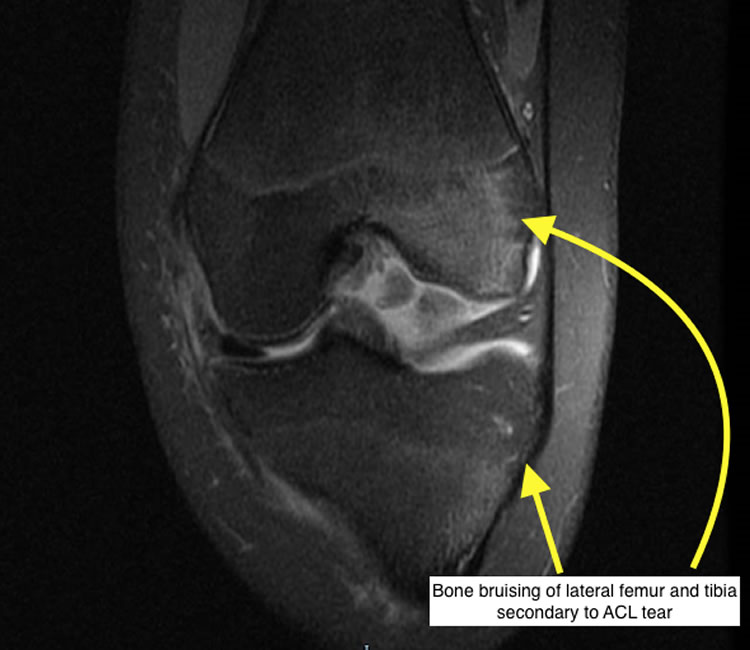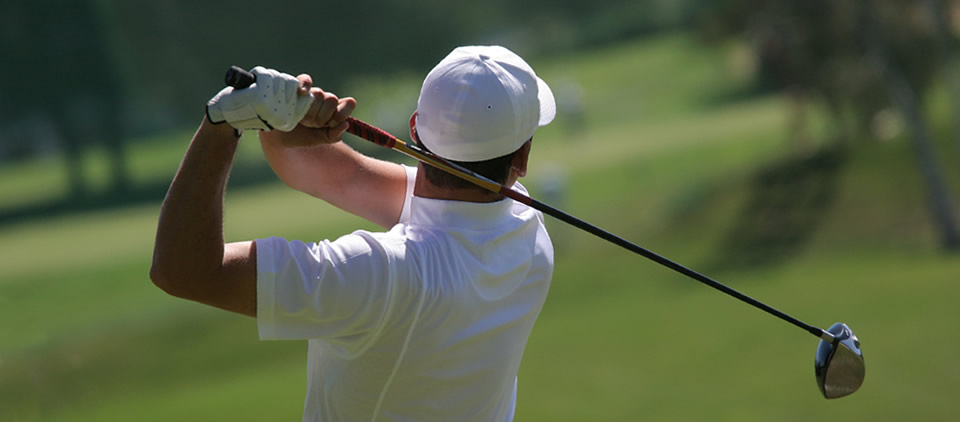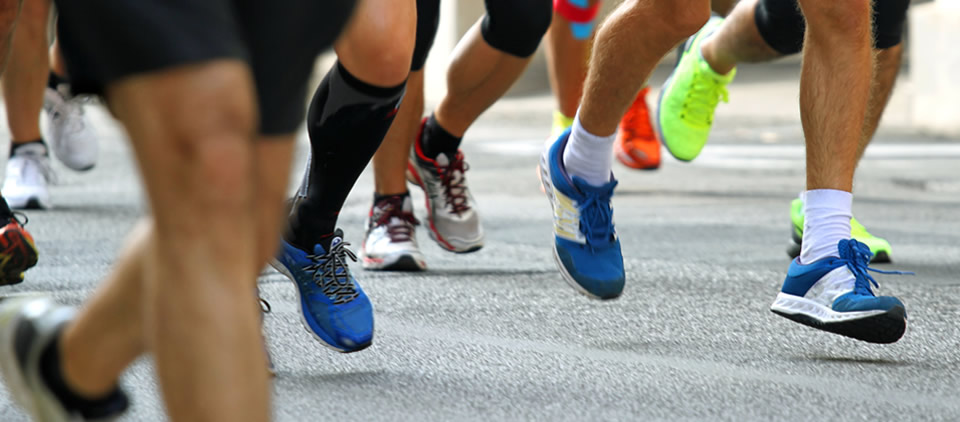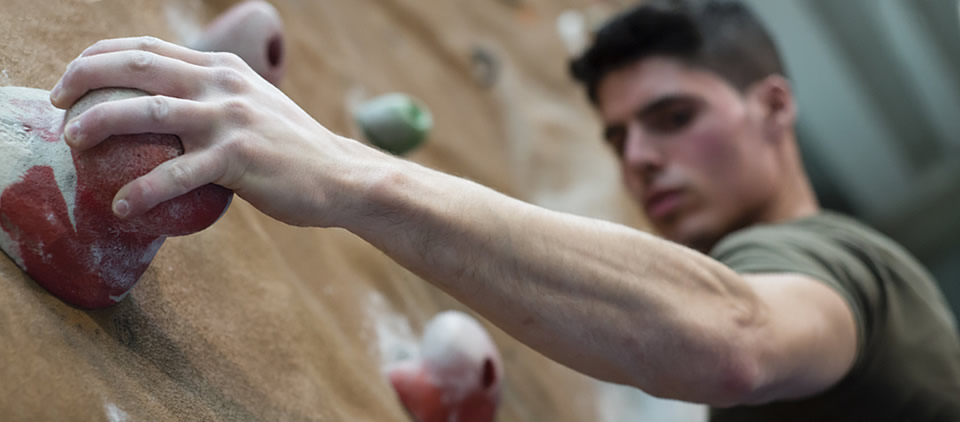Bone Bruising
In some injury mechanisms the bone surfaces that form the joint surfaces or the areas of bone which suffer a direct blow suffer bone bruising.
In this condition there has been no actual break in the continuity of the bone but effectively an acute inflammation and oedema of the bone marrow that resides inside the bone.
Diagnosis
Bone bruising is diagnosed on the T2 weighted sequence of an MRI scan.
Associated injuries
Bone bruising in specific patterns in the knee can be diagnostic for associated injuries.
A tear of the anterior cruciate ligament (ACL) is often associated with bone bruising of the lateral femur and tibia.

Lateral dislocation of the patella is associated with bruising of the medial facet of the patella and the lateral femoral condyle.
Symptoms
In some cases bone bruising may occur with sprains of the ligaments or in isolation.
Bone bruising can be a source of ongoing pain in the knee for up to nine months after injury.
Impact activities such as road running may aggravate the pain.
Treatment
There is no specific treatment for bone bruising.
In cases where it has occurred in association with an unstable ligament tear or bone fracture then surgery may be performed for the ligament or bone, but this does not treat the bone bruising.
As mentioned above the treatment involves appreciation of the injury and respecting the time is takes for this poorly understood condition to heal naturally.
Avoidance of impact activities of the joint or limb are recommended with a rehabilitation programme designed with a physiotherapist.
Interval MRI scans may be performed to confirm the bone nursing is improving.


